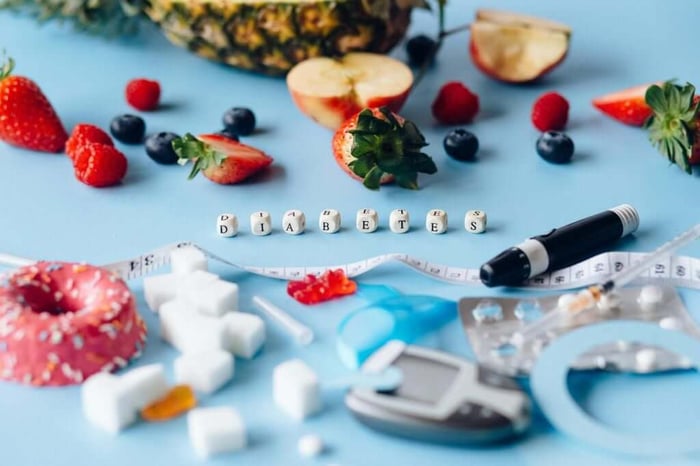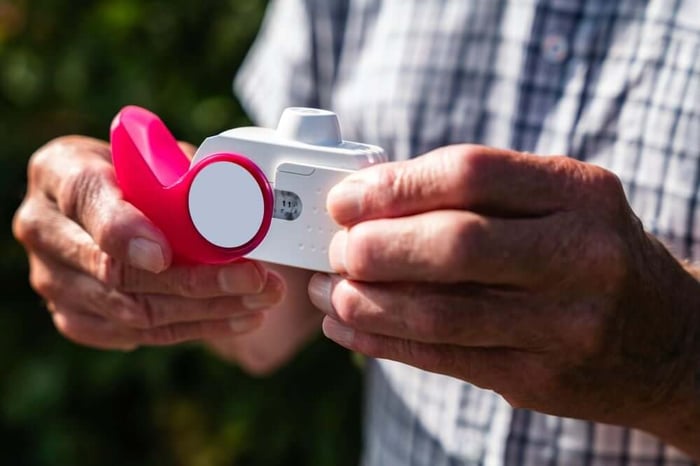Type 2 diabetes is one of the most common chronic diseases in the United States, and it's on the rise. According to a Centers for Disease Control and Prevention (CDC) article, more than 38 million Americans have diabetes, and around 90-95% of those cases are type 2. Even more concerning, another CDC report states that almost 98 million American adults are living with prediabetes, many of whom don’t even know it. These numbers highlight a simple but powerful truth: managing blood sugar through diet is no longer just a niche concern—it’s a mainstream priority.
Before we look at foods that can help in controlling blood glucose levels, let’s first understand the key difference between the two types of diabetes and why we deal primarily with type 2 in this article.
The Root Cause
- Type 1 Diabetes is an autoimmune disease. The body’s immune system mistakenly attacks and destroys the insulin-producing beta cells in the pancreas. As a result, people with type 1 produce little to no insulin and must take insulin daily to survive.
- Type 2 Diabetes is primarily a result of insulin resistance—the body still produces insulin, but the cells don’t respond to it properly. Over time, the pancreas may produce less insulin, but it’s not due to immune system destruction.
Treatment Needs
- Type 1 always requires insulin therapy for life. Lifestyle changes help, but they can’t replace insulin.
- Type 2 can often be managed—and in some cases reversed—through diet, exercise, weight loss, and sometimes medications. Some people with type 2 may eventually need insulin, but not always.
Reversibility
- Type 1 is not reversible. The body no longer produces insulin, and there is no cure currently available. Researchers are exploring treatments like beta cell transplants or immune therapy, but nothing has fully replaced insulin yet.
- Type 2 can be reversed or put into remission. This typically happens when someone loses weight, improves their diet, and becomes more physically active. These changes reduce insulin resistance and can normalize blood sugar levels without medication—though continued healthy habits are essential to keep it in remission.
In short, type 1 is a hormone deficiency caused by autoimmune destruction, while type 2 is a resistance issue linked to lifestyle and metabolism. That's why lifestyle changes can make a huge impact on type 2—and often not at all on type 1.
Let’s now take a closer look at what goes into a blood sugar-friendly plate. Bear in mind that a diabetic diet isn’t about deprivation. It’s about smart choices. Most of the foods that help manage blood glucose are also just good, healthy food—affordable, accessible, and available in any regular grocery store.
Whole Grains Over Refined Carbs
One of the easiest and most impactful swaps you can make is trading refined grains (white bread, white rice, sugary cereals) for whole grains. Whole grains contain more fiber, which slows the digestion of carbs and leads to a more gradual rise in blood sugar.
Best options:
- Oats (especially steel-cut or old-fashioned)
- Quinoa
- Brown rice
- Barley
- Whole wheat bread and pasta
Aim for at least 3 servings a day of whole grains. Look for packages labeled “100% whole grain” or check the ingredient list—whole wheat, whole oats, or whole rye should be the first item.
Non-Starchy Vegetables
Non-starchy vegetables are low in carbs, rich in fiber, and packed with essential nutrients. They help you fill up without spiking blood sugar and are incredibly versatile.
Great choices include:
- Broccoli
- Spinach
- Cauliflower
- Green beans
- Cabbage
- Zucchini
- Peppers
Steam, roast, stir-fry, or eat them raw in salads—there’s no wrong way to load your plate with veggies. Aim for at least half your plate at lunch and dinner to be vegetables.
Lean Proteins
Protein is crucial for managing hunger and maintaining muscle mass, especially in people with diabetes. Lean sources of protein don’t raise blood sugar and help you feel fuller longer.
Top protein picks:
- Skinless chicken or turkey
- Eggs
- Tofu and tempeh
- Fish (especially fatty fish like salmon and sardines)
- Low-fat Greek yogurt
- Beans and lentils (also contain carbs but are high in fiber and protein)
If you’re watching carbs closely, keep an eye on portion sizes with beans and lentils—but don’t avoid them. They’re nutrient-dense and linked to better blood sugar control.
Fruit
There’s a myth that people with diabetes need to avoid fruit. That’s false. Fruit contains natural sugar, but it also offers fiber, vitamins, and antioxidants. The key is choosing whole fruits (not juice or dried versions) and watching portions.
Smart fruit options:
- Berries (blueberries, strawberries, raspberries): low in sugar, high in fiber
- Apples and pears (with skin)
- Citrus fruits like oranges and grapefruits
- Cherries
- Peaches and plums
Stick to one small piece or ½ to 1 cup per serving. Avoid canned fruit in syrup and fruit juices, which act more like sugar bombs than nutrition.
Nuts and Seeds
Packed with healthy fats, protein, and fiber, nuts and seeds are blood sugar-friendly in moderation. They also promote heart health, which is especially important for people with diabetes.
Top choices:
- Almonds
- Walnuts
- Chia seeds
- Flaxseeds
- Pumpkin seeds
- Peanut butter (look for natural versions without added sugar)
A small handful (about 1 ounce) goes a long way. Sprinkle seeds on yogurt, salads, or oatmeal, or grab a few nuts as a snack.
Healthy Fats
Not all fats are created equal. Unsaturated fats—especially from plant-based sources and fish—help improve insulin sensitivity and lower the risk of heart disease.
Include:
- Avocados
- Olive oil
- Nuts and seeds (already mentioned above)
- Fatty fish (like salmon, mackerel, tuna)
Limit saturated fats from red meat, butter, and processed foods. And avoid trans fats entirely—they’re harmful for everyone, not just people with diabetes.
Dairy
Dairy is a good source of calcium and protein. Choose low-fat or non-fat versions to limit saturated fat intake.
Go for:
- Low-fat Greek yogurt
- Skim or 1% milk
- Cottage cheese
- Unsweetened almond or soy milk (for plant-based options)
Watch for added sugars in flavored yogurts and dairy substitutes—read labels carefully.
Spices and Herbs
People with diabetes don’t need to settle for bland food. Fresh or dried herbs and spices add flavor without carbs or calories.
Blood sugar-friendly picks:
- Cinnamon (may help improve insulin sensitivity)
- Turmeric (anti-inflammatory benefits)
- Garlic and onion
- Basil, oregano, thyme, rosemary
- Ginger
Use herbs and spices to season lean meats, veggies, and whole grains instead of relying on high-sugar or high-sodium sauces.
Beverages
Water is your best friend. Staying hydrated helps with glucose regulation. Other good options:
- Unsweetened iced tea
- Sparkling water
- Coffee (without loads of cream and sugar)
Avoid sugary drinks like soda, sweet tea, energy drinks, and fruit juices—they can spike blood sugar rapidly.
A Balanced Plate
The best diabetic diet isn’t a crash diet—it’s a sustainable, enjoyable way to eat that fits your life. The "plate method" is a great visual guide:
- Half your plate: non-starchy vegetables
- One quarter: lean protein
- One quarter: whole grains or starchy vegetables
Add a small serving of fruit and a healthy fat, and you’ve got a solid meal.
It’s Not Just About Food—It’s About Control
Living with diabetes can be overwhelming at times, but your plate is one of the most powerful tools you have. Choosing the right foods doesn’t just manage blood sugar—it boosts energy, improves mood, and supports overall health.
Small changes add up. You don’t have to overhaul your entire diet overnight. Start with one swap: white rice to brown, soda to water, cookies to berries and Greek yogurt. Build from there. And remember, you're not alone. Millions of people are making these same changes every day—and seeing real results.
At LL Medico, we strive to support healthy diet habits. With 30 years of experience in the senior care market, we have put together a wide range of quality products that can help you manage your blood glucose. These include nutritional supplements and diabetic supplies such as test strips and meters.
Of course, as a supplier of senior care products, we also have a huge range of adult diapers and skin care products. Call us today at (855) 422-4556 or email support@llmedico.com. We’d love to have a chat with you about your needs and how our products can make your life easier.
As author and motivational speaker Jim Rohn once said, “Take care of your body. It’s the only place you have to live.” This isn’t just good advice—it should be your game plan. In closing, while we mentioned earlier that the article is primarily aimed at people with type 2 diabetes, those with type 1 should also experience improved blood glucose control by following these diabetic diet guidelines.







 855-422-4556
855-422-4556 Chat
Chat E-Mail
E-Mail Monday - Friday 9:00AM to 5:00PM EST
Monday - Friday 9:00AM to 5:00PM EST





 Shopping With LL Medico
Shopping With LL Medico
 855-422-4556
855-422-4556